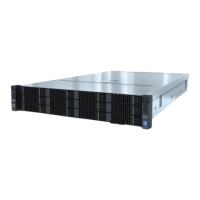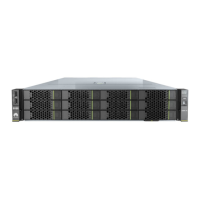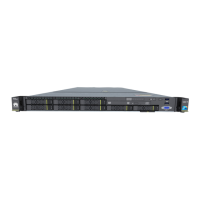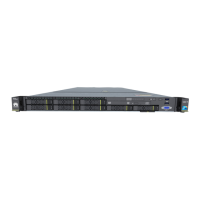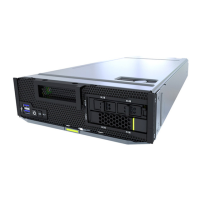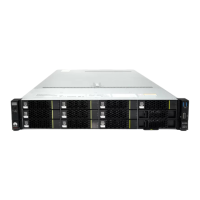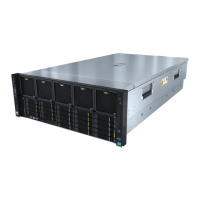Item Specifications
Memory
l A maximum of 24 DDR4 RDIMMs or LRDIMMs
l RDIMM: twenty-four 32 GB RDIMMs for two CPUs, with a
maximum memory capacity of 768 GB
l LRDIMM: twenty-four 64 GB LRDIMMs for two CPUs, with a
maximum memory capacity of 1536 GB
l LRDIMM: twenty-four 128 GB LRDIMMs for two CPUs, with a
maximum memory capacity of 3072 GB
l Maximum memory speed: 2666 MT/s
l Memory protection: Error Checking and Correcting (ECC), Mirrored
Channel Mode, Single Device Data Correction (SDDC), Rank
Sparing Mode, and Lockstep
NOTE
DIMMs in one server must be of the same model, type (RDIMM or LRDIMM),
and specifications (capacity, bit width, number of ranks, and height).
Storage
l Supports various drive configurations. For details, see Table 2-8.
l Supports two M.2 SSD modules.
NOTE
l An M.2 SSD is designed only for installing a Linux OS and functions as a
boot device. Small-capacity M.2 SDDs (such as 32 GB or 64 GB SSDs)
have short endurance and do not support logging. If a small-capacity M.2
SSD is used as the boot device, a dedicated log drive or log server is
required for logging.
For example, you can dump VMware logs in either of the following ways:
-Redirect /scratch. For details, visit https://kb.vmware.com/s/article/
1033696.
-Configure syslog. For details, visit https://kb.vmware.com/s/article/
2003322.
l M.2 SSDs have short endurance and cannot be used as data storage
devices. M.2 SSDs have write-through risks in a short time, and cannot be
used in frequent data erase operations. SSDs or HDDs with enterprise-level
high DWPD can be used for data storage.
l Installing write-intensive service software on M.2 SSDs will accelerate the
write life consumption and result in perpetual damage of M.2 SSDs.
Therefore, M.2 SSDs cannot be used for such services.
l M.2 SSDs cannot be used in cache scenarios.
l Supports drive hot swap.
l Supports RAID 0, 1, 10, 1E, 5, 50, 6, and 60, provides a
supercapacitor to protect cache data from power failures, and supports
RAID level migration, drive roaming, self-diagnosis, and web-based
configuration.
l Allows a SAS card or SAS RAID controller card (with a maximum of
4 GB cache) to be configured on the mainboard to improve drive
storage performance and ensure user data security.
NOTE
If the BIOS is in Legacy mode, the server does not support a 4K drive as the
system boot drive.
2288H V5 Server
User Guide
13 Product Specifications
Issue 04 (2018-09-04) Copyright © Huawei Technologies Co., Ltd. 248
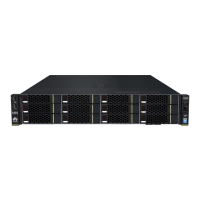
